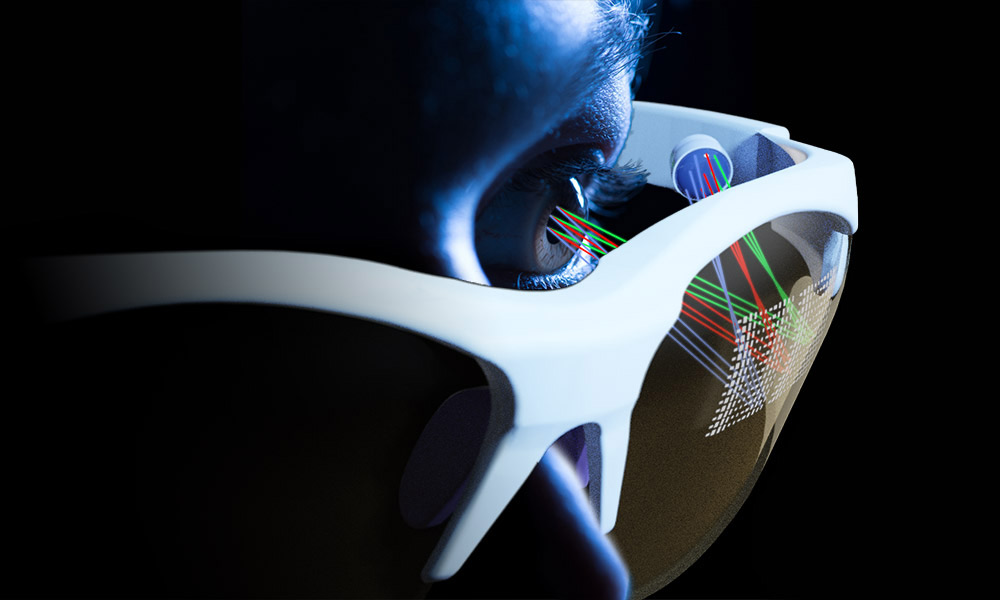
A new way to make AR/VR glasses look more like regular glasses
Rochester researchers are combining freeform optics and a metasurface to avoid ‘bug eyes’ in AR/VR glasses and headsets.

Susana Marcos to lead Center for Visual Science
Internationally recognized pioneer in vision science and its applications is named the next director of one of the University’s most highly regarded research centers.
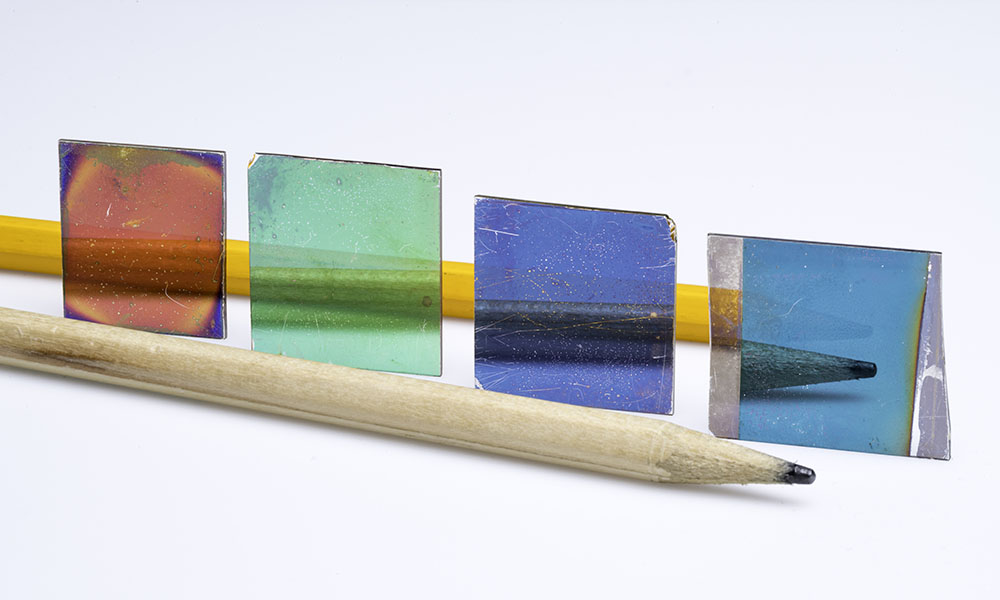
An optical coating like no other
Researchers in the Institute of Optics have developed a new class of optical coatings, Fano Resonance Optical Coatings, that can both reflect and transmit the same wavelength simultaneously.
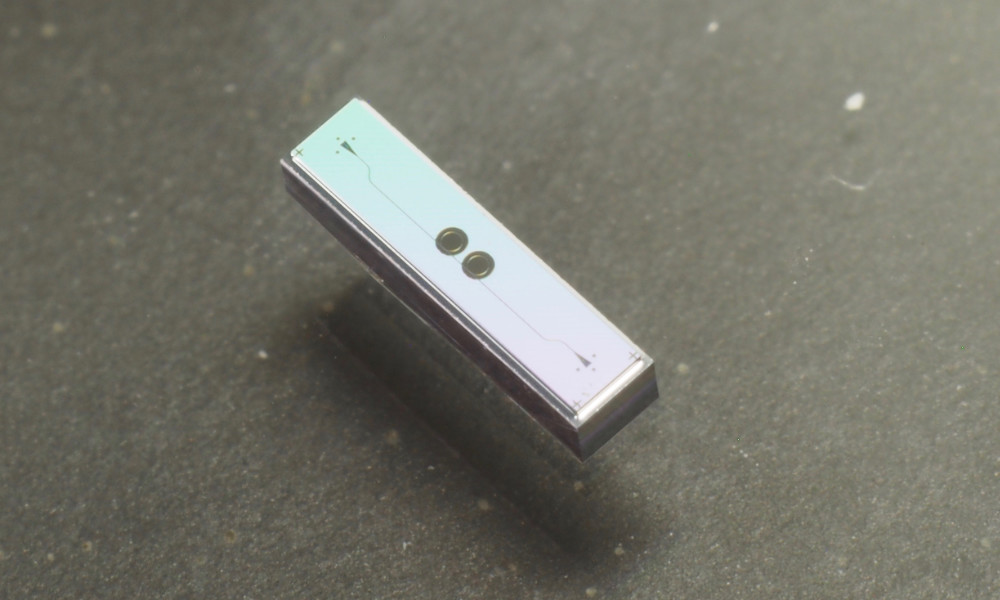
Chip on a card would detect COVID-19 antibodies in a minute
Researchers in Rochester are developing a “completely new diagnostic platform” that could prove to be a valuable clinical tool for detecting exposure to multiple viruses from a single drop of blood.

FACE Foundation funds international optics education collaboration between Rochester and École Centrale Marseille
The grant supports collaboration between US and French institutions at a time when international education and study abroad have been severely impacted by COVID-19.
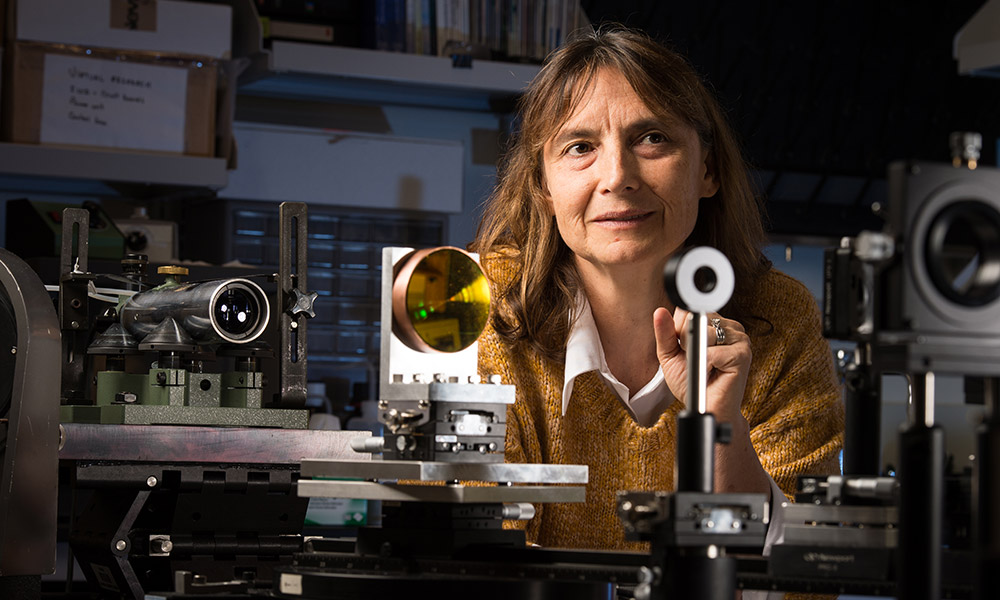
Jannick Rolland named fellow of National Academy of Inventors
The director of the Center for Freeform Optics holds more than 50 patents and is considered a pioneer in optical applications in augmented and virtual reality.
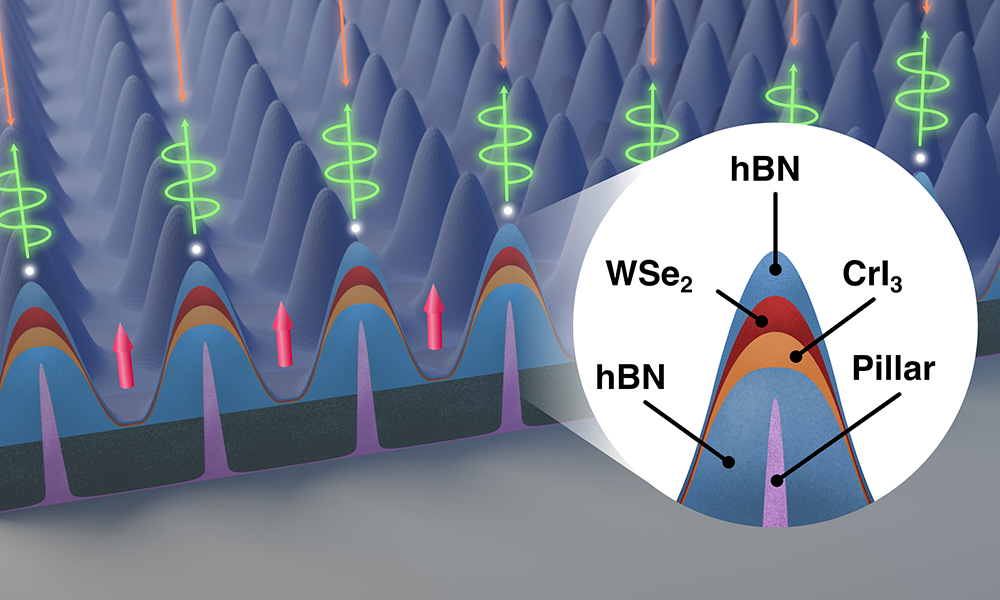
Building a quantum network one node at a time
New research demonstrates a way to use quantum properties of light to transmit information, a key step on the path to the next generation of computing and communications systems.
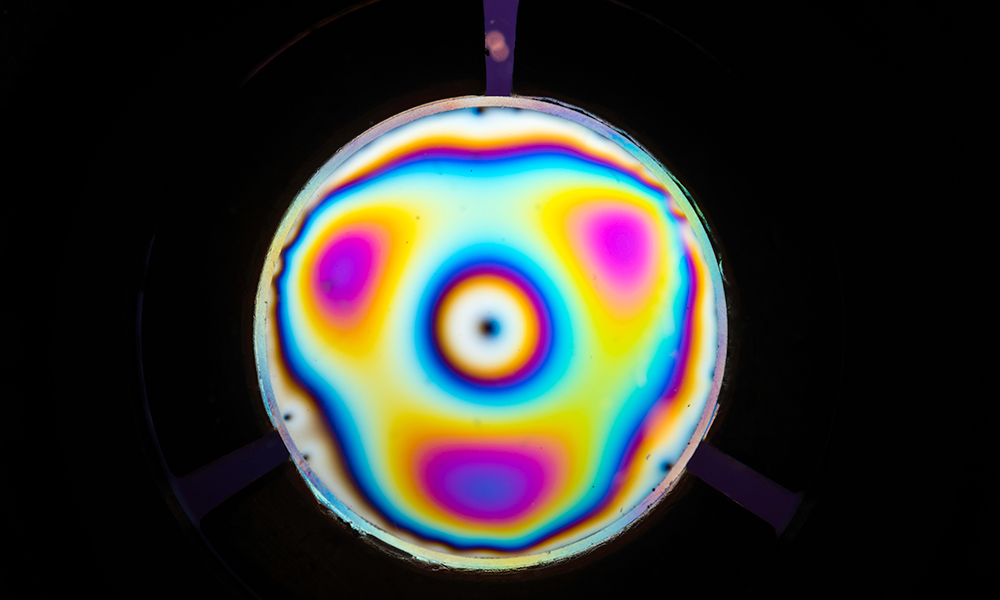
Finally, a way to see molecules ‘wobble’
Breakthrough by international optics team reveals how proteins behave in 3D, enabling new insights into cell behavior and disease progression
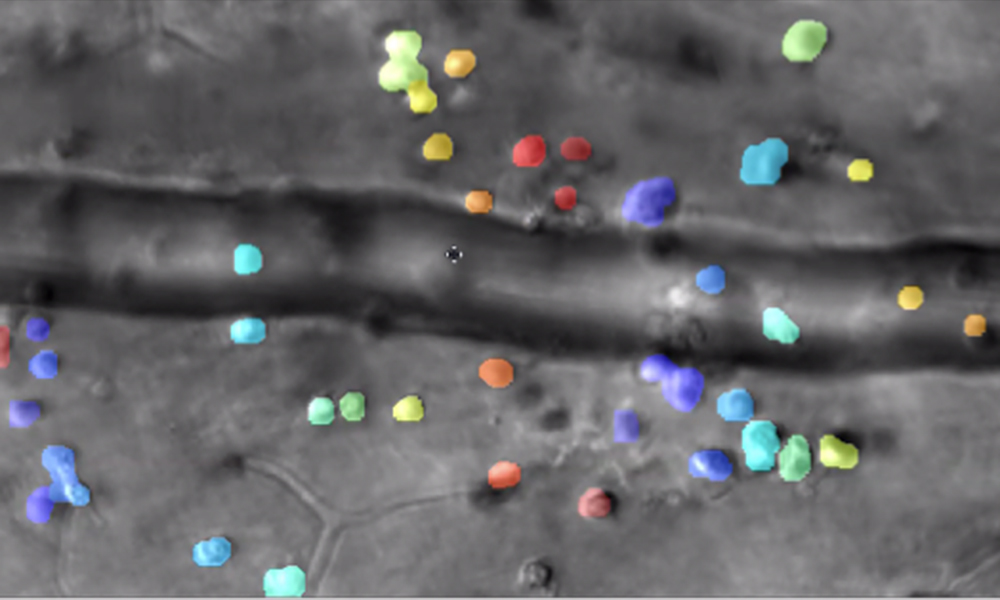
Imaging the secret lives of immune cells in the eye
Rochester researchers combine videography and artificial intelligence to track the interactions of microscopic immune cells in a living eye without dyes or damage, a first for imaging science.
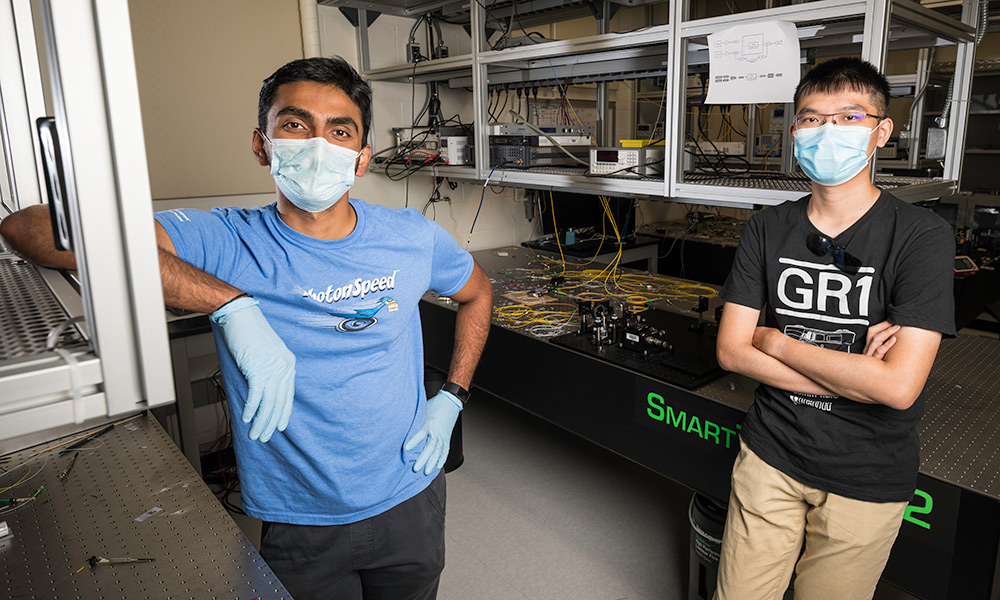
Rochester researchers document record-setting optical fiber
The innovative fiber—made of seven capillaries surrounding a hollow core—may be a promising platform for quantum information processing and other applications.
